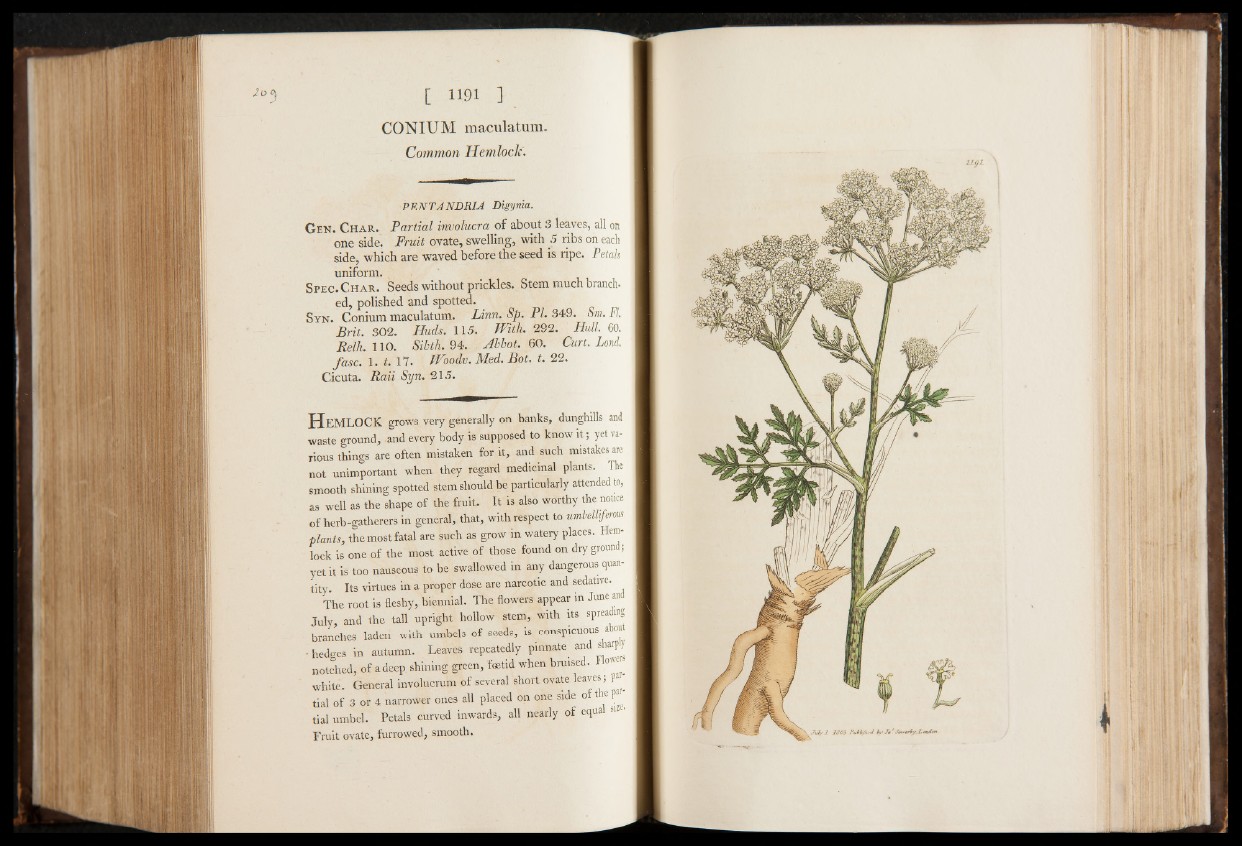
[ H91 1
CONIUM maculatum.
Common Hemlock.
PENTANDRIA Digynia.
G en. Char. Partial involucra of about 3 leaves, all on
one side. Fruit ovate, swelling, with 5 ribs on each
side, which are waved before the seed is ripe. Petals
uniform.
Spec. Char. Seeds without prickles. Stem much branch-
ed, polished and spotted.
Syn. Conium maculatum. Linn. Sp. PL 349. Sm. FI.
Brit. 302. Huds. 115. With. 202. Hull. 60.
Relh. 110. Sibth. 94. Abbot. 6 0 . Curt. Land,
fasc. 1. t. 17. Woodv.Med.Bot. t. 22.
Cicuta. Rail Syn. 2 1 5 .
H e m l o c k grows very generally on banks, dunghills and
waste ground, and every body is supposed to know i t ; yet various
things are often mistaken for it, and such mistakes are
not unimportant when they regard medicinal plants. The
smooth shining spotted stem should be particularly attended to,
as well as the shape of the fruit. It is also worthy the notice
of herb-gatherers in general, that, with respect to umbelliferous
plants, the most fatal are such as grow in watery places. Hemlock
is one of the most active of those found on dry ground;
yet it is too nauseous to be swallowed in any dangerous quantity
Its virtues in a proper dose are narcotic and sedative.
The root is fleshy, biennial. The flowers appear in June and
July, and the tall upright hollow stem, with its spreading
branches laden with umbels of seeds, is conspicuous about
•hedges in autumn. Leaves repeatedly pinnate and sharpy
notched, of a deep shining green, foetid when bruised. F owe*
white. General involucrum of several short ovate leaves ;p ,
tial of 3 or 4 narrower ones all placed on one side of the p
tial umbel. Petals curved inwards, all nearly of equal si
Fruit ovate, furrowed, smooth.